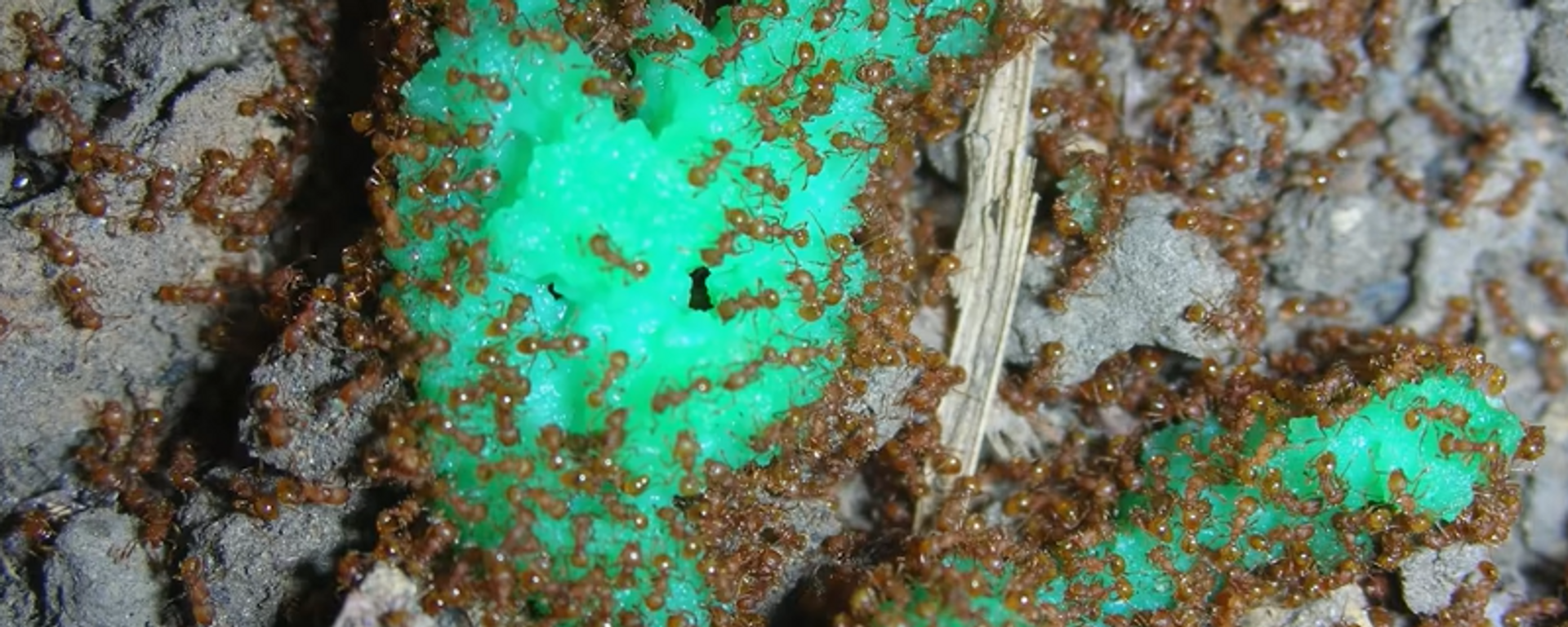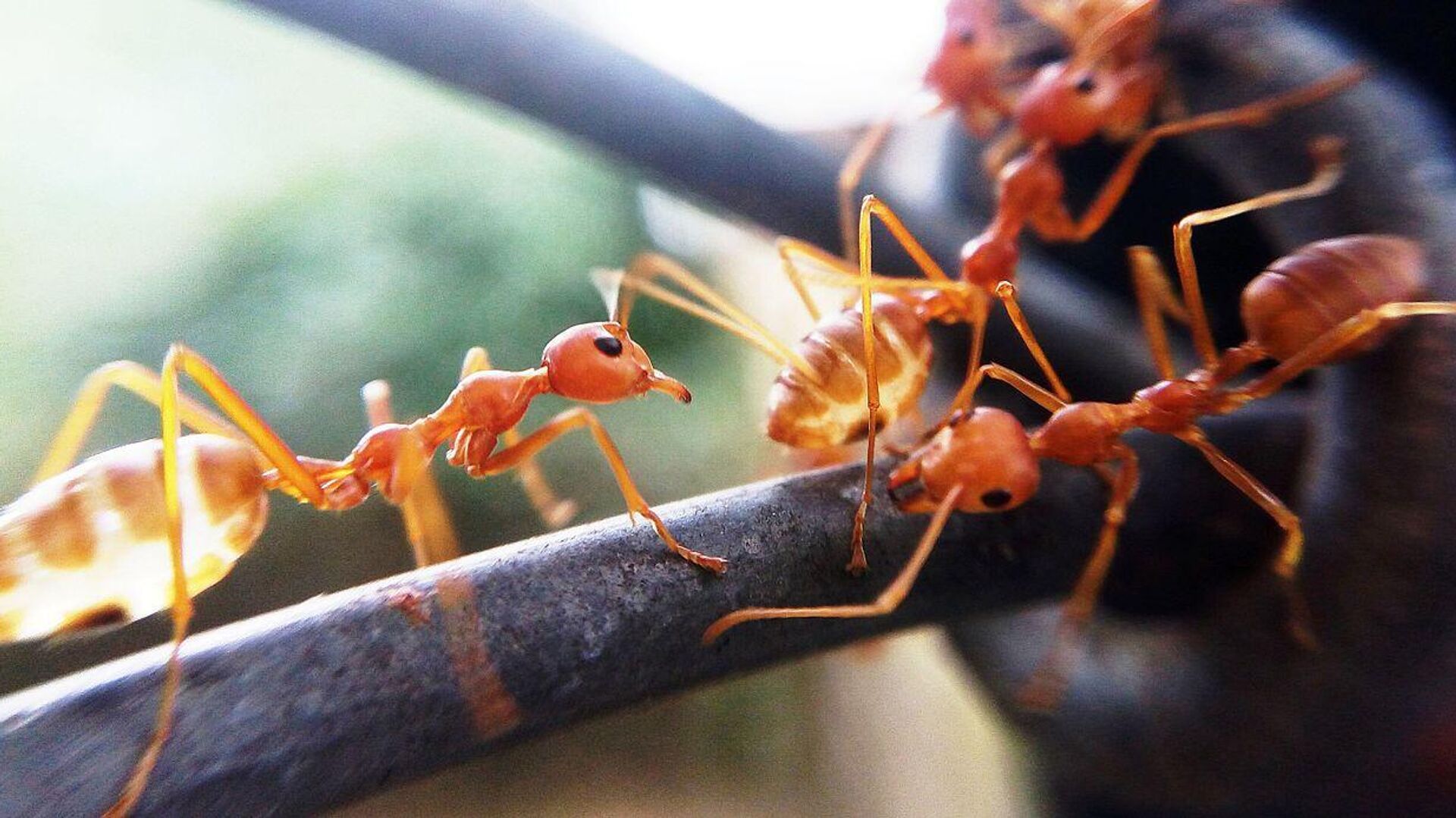https://sputnikglobe.com/20230911/marching-one-by-one-first-red-fire-ant-nests-in-europe-found-in-sicily-1113292000.html
Marching One By One: First Red Fire Ant Nests in Europe Found in Sicily
Marching One By One: First Red Fire Ant Nests in Europe Found in Sicily
Sputnik International
A highly invasive ant species notorious in the Americas for their persistent swarms and stinging bites, red fire ants have finally been detected in Europe. Scientists say they knew that it would happen sooner or later.
2023-09-11T18:59+0000
2023-09-11T18:59+0000
2023-09-11T18:59+0000
beyond politics
sicily
ant
biology
italy
europe
invasive species
https://cdn1.img.sputnikglobe.com/img/07e6/09/07/1100481978_24:0:1258:694_1920x0_80_0_0_70904e3bca0f6dc52a5908bface17e73.jpg
Several red fire ant colonies have been found recently in northern Sicily, and a study published Monday in in Current Biology explains the extent of their spread and how they likely established themselves on a new continent.“S. invicta is one of the worst invasive species. It can spread alarmingly quickly,” lead study author Mattia Menchetti, a researcher at the Institute of Evolutionary Biology in Spain, told US media.According to their report, 88 nests have already been found spread across 5 hectares (12.4 acres) in the Syracuse suburbs, on Sicily's southeastern corner. DNA analysis revealed the ants had come from either the United States or from China, where they have already established themselves as an invasive species. The ants are originally from South America.The researchers believe that queen red fire ants must have arrived in the port of Syracuse with other cargo and flown north to establish the nests. While individual red fire ants have been found on cargo at several European ports, they were never queens who established nests.Ant stings in the Syracuse area have increased since 2019, meaning the ants might have arrived as much as four years earlier, the researchers noted.While Sicily is an island, the researchers warn that the fire ants have the potential to one day establish themselves across much of southern Europe. An estimated 7% of the continent has a climate amenable to their subtropical tastes, including cities like Barcelona, Rome, London, and Paris.Roger Vila, the study’s lead and the principal investigator at the Institute of Evolutionary Biology’s Butterfly Diversity and Evolution Lab, said that “Coordinated efforts for early detection and rapid response in the region are essential to successfully manage this new threat, before it spreads uncontrollably.”
https://sputnikglobe.com/20221116/watch-out-fire-ants-are-invading-hawaii--stinging-people-in-their-sleep-officials-say-1104266917.html
sicily
italy
Sputnik International
feedback@sputniknews.com
+74956456601
MIA „Rossiya Segodnya“
2023
News
en_EN
Sputnik International
feedback@sputniknews.com
+74956456601
MIA „Rossiya Segodnya“
Sputnik International
feedback@sputniknews.com
+74956456601
MIA „Rossiya Segodnya“
red fire ant; sicily; invasive species;
red fire ant; sicily; invasive species;
Marching One By One: First Red Fire Ant Nests in Europe Found in Sicily
A highly invasive ant species notorious in the Americas for their persistent swarms and stinging bites, red fire ants have finally been detected in Europe. Scientists say they knew that in our increasingly globalized world, it would happen sooner or later, but they’re fighting back tooth and nail anyway.
Several red fire ant colonies have been found recently in northern Sicily, and a
study published Monday in in Current Biology explains the extent of their spread and how they likely established themselves on a new continent.
“S. invicta is one of the worst invasive species. It can spread alarmingly quickly,” lead study author Mattia Menchetti, a researcher at the Institute of Evolutionary Biology in Spain, told US media.
"Finding this species in Italy was a big surprise, but we knew this day would come," he added.
According to their report, 88 nests have already been found spread across 5 hectares (12.4 acres) in the Syracuse suburbs, on Sicily's southeastern corner. DNA analysis revealed the ants had come from either the United States or from China, where they have already established themselves as an invasive species. The ants are originally from South America.
The researchers believe that queen red fire ants must have arrived in the port of Syracuse with other cargo and flown north to establish the nests. While individual red fire ants have been found on cargo at several European ports, they were never queens who established nests.

16 November 2022, 00:55 GMT
Ant stings in the Syracuse area have increased since 2019, meaning the ants might have arrived as much as four years earlier, the researchers noted.
Unlike many poisonous ants, which bite with their mandibles before spraying a stinging acid, red fire ants are actually venomous: they bite to get a grip on their prey, then inject it with venom using a stinger on their abdomen. This venom causes extreme pain that victims say is comparable to being burned by fire - hence the name - and can be deadly if the victim is allergic or if they receive many bites.
While Sicily is an island, the researchers warn that the fire ants have the potential to one day establish themselves across much of southern Europe. An estimated 7% of the continent has a climate amenable to their subtropical tastes, including cities like Barcelona, Rome, London, and Paris.
Roger Vila, the study’s lead and the principal investigator at the Institute of Evolutionary Biology’s Butterfly Diversity and Evolution Lab, said that “Coordinated efforts for early detection and rapid response in the region are essential to successfully manage this new threat, before it spreads uncontrollably.”
Menchetti added that “The public could play a key role in the detection of S invicta, considering that it is frequently found in urban and adjacent areas. It is possible to detect this ant due to its painful stings and the characteristic mounds of their nests, although confirmation of an expert is required.”



